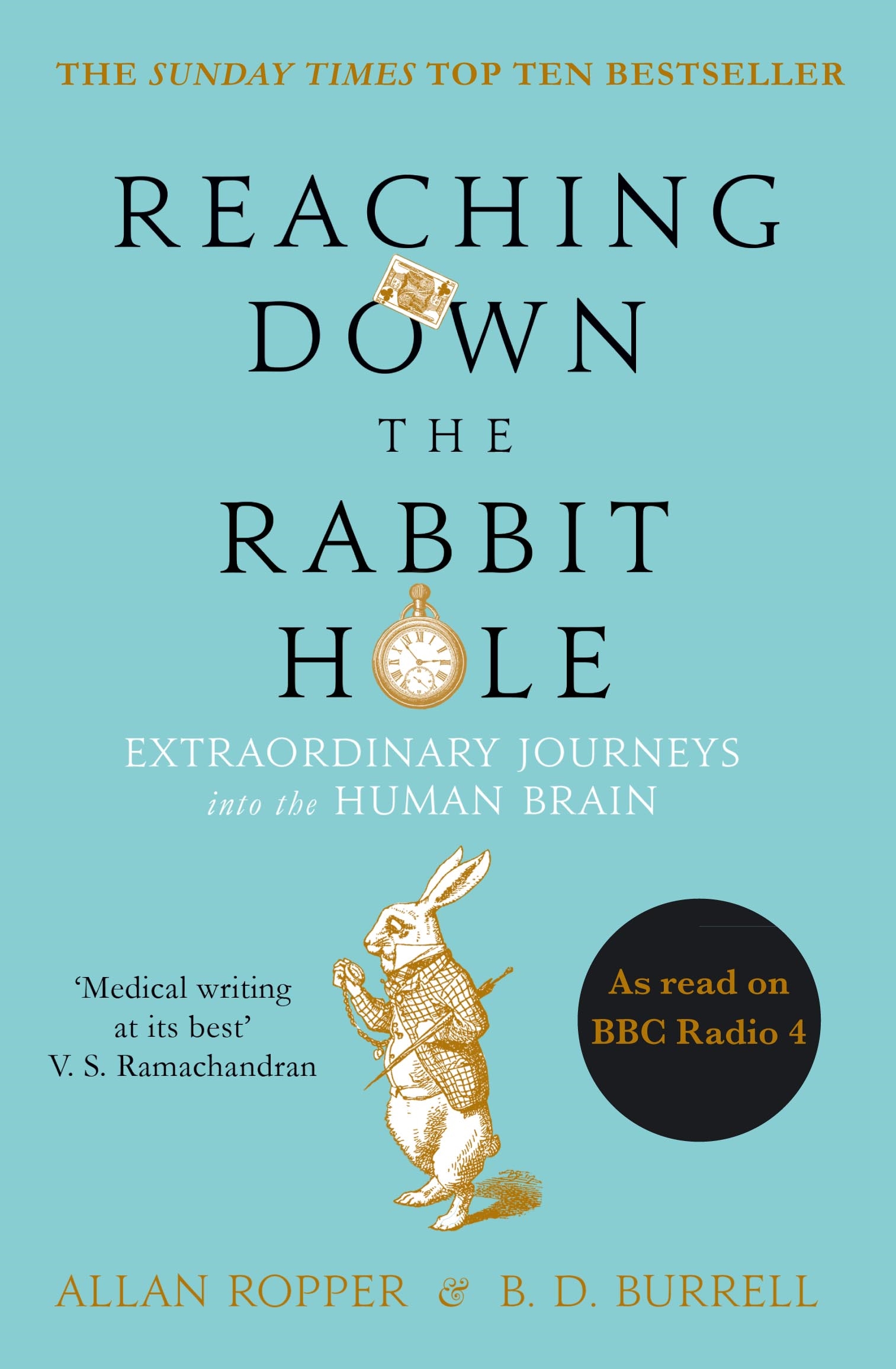A Renowned Neurologist Explains the Mystery and Drama of Brain Disease
Despite the diagnostic brilliance described in this day-in-the-life portrayal of Dr Ropper’s professional life, the titular rabbit is not that which is traditionally pulled from a hat. Rather, the title refers to the White Rabbit’s entry into Wonderland, where a bewildered Alice is advised by the Red Queen to believe six impossible things before breakfast.
Ropper sees his job as reaching to pull patients from their other-wordly holes of neurological dysfunction. In doing so, he is more than content with the six improbable things that must be confronted each morning. And the improbables are what make this book so memorable, including a gag that may help readers understand its provenance: a grandmother takes an afternoon stroll, pushing the latest addition to the family, when a friend stops to comment on how beautiful the baby is. The grandmother’s reply is along the lines of “I know, but you should see the pictures”.
In this book, the pictures of Ropper’s routine clinical work in a very busy professional life are created with the help of a co-author, thought necessary because “no physician, in the moment, can serve the patient and the story”. The venture required someone who was willing to follow Ropper at work to “experience life on the ward with me, even without me”. 70% of the dialogue is verbatim, 20% recollected, and 10% extrapolated. Some of the case histories are borrowed from colleagues. Although its aim is not to be an “as-told-to” book, it has in parts the feel of an as-heard-by-a-journalist account. Brian Burrel the coauthor, is described as having a “lyrical talent for making true stories sing, which is perhaps as much a warning as a recommendation.
But the book is very readable. Personal details and straight-talking observations are juxtaposed with clinically-relevant insights into Ropper’s approach, the influence of his colleagues (junior and senior, past and present), and the environment in which they work. The tempo is energetic and energising and the clinical wisdom will raise smiles. The Raymond Chandler-like descriptions (he relates the description by one doctor of a patient as a “slob of a tattooed smoker”; another has “nostrils like a racehorse”), the no-nonsense description of colleagues (the “Irish approach”) and the casual nature of some of the reported conversations (he admits that when dealing with patients with functional disorders that he has “no spiel to offer, and sometimes revert to being a jerk”) will also raise eyebrows. Those eyebrows may be alternately raised and lowered, together and separately, because it is difficult not to identify with the situations being described. The atmosphere is “on edge”; the patients are at the very edge, some an eyelash away from being locked in.
Some of the writing should be compulsory reading in medical curricula. The most powerful is perhaps the description of a patient’s death. Undeterred by the consequences of finding evidence of a potentially-treatable condition, with candour and humility, he requests a post mortem examination. Subsequently, he leads the junior staff to the morgue. His arresting on-the-slab description of the epidural abscess, there to be seen and handled by staff who might have managed things differently, is a call to arms for the educational value of post mortems. All the books, the diagrams and web searches will never match the evisceratingly memorable effect of touching reversibly-diseased organs laid out by an interested and understanding pathologist – as our Pathology, so our practice. Post mortems can change the persective of those in attendance; they can change people in to proper doctors. Ropper’s metaphor – he cranes his neck to see over the shoulders of his (and our) professional ancestors, to be reminded of their thoughts when they looked at similar clinical and pathological material – is spot on. As a finale, he points out that Medicare does not pay for post mortems – it is not part of their package. The Medicare boxes may be ticked, but it takes clinicians like Ropper to force institutions to think outside them. Bravo.
In stark educational contrast is the decision to visit George, a patient not seen since being diagnosed with Motor Neurone Disease more than five years before. George is at home, tetraplegic and ventilated. Ropper describes a conversation wherein he explains to George, and George’s wife, his recent role in allowing a patient with motor neurone disease to die. Ropper asks “Are you a little bummed out that I would be part of this?”. Thankfully, they assure him that they are in support of people making their own decisions under such circumstances.
The account contains little of Ropper’s inner conversation when managing this most testing of conditions but does describe his leaving George’s home and driving back across the causeway as dusk approaches – back to his wife, his house, his dog, his ham radio pals, his life, and his new friend Sheldon to whom he later confides that “life is too serious to be taken entirely too seriously”. The juxtaposition of the banal with the profound, the casual with the clinical, and the recognisably real with the portrayed image left me thinking of this book as something of a plumber’s handkerchief:1 it is not entirely clear to what uses it will be put.
However, even if the authorial double act has nudged some of the writing away from the scientific, those parts that are more Ropper and Adams than Ropper and Chandler, more clinical looking glass than Wonderland, make for an improbably intriguing read.
Reference
1. Chandler R. Farewell, My Lovely, 1940.
